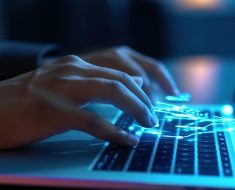Here we will list out 10 free certificate courses on Python data analysis that you can take online
One of the most well-liked and adaptable programming languages for data analysis is Python. It offers a rich set of libraries and tools that can help you perform various tasks such as data manipulation, visualization, modeling, and machine learning. Whether you are a beginner or an expert, there is a benefit of learning Python course for you that can help you learn new skills.
1. Data Analysis with Python: This course, offered by IBM on Coursera, will teach you how to use Python to analyze data and create insightful visualizations. You will learn how to use libraries such as pandas, numpy, matplotlib, and seaborn to perform data wrangling, exploration, and presentation. You will also work on real-world datasets and apply your skills to various domains such as finance, health, and social media.
2. Python for Data Science, AI & Development: This course, also offered by IBM on Coursera, will introduce you to the fundamentals of the Python programming community and its applications in data science and artificial intelligence. You will learn how to use Python to write code, work with data structures, create functions, and use modules. You will also learn how to use Python to access web data, interact with databases, and create interactive applications.
3. Python for Analytics: This course, offered by the National University of Singapore on Coursera, will teach you how to use Python to perform data analysis and visualization for business and management problems. You will learn how to use libraries such as pandas, numpy, scipy, and statsmodels to perform descriptive, inferential, and predictive analytics. You will also learn how to use libraries such as Matplotlib, seaborn, and Plotly to create interactive and attractive visualizations.
4. Analyzing Data with Python: This course, offered by edX, will teach you how to use Python to analyze data and create machine learning models. You will learn how to use libraries such as pandas, numpy, scikit-learn, and Tensorflow to perform data cleaning, preprocessing, feature engineering, and model evaluation.
5. Learning Python for Data Analysis and Visualization: This course, offered by Udemy, will teach you how to use Python to analyze and visualize data from various sources and formats. You will learn how to use libraries such as pandas, numpy, scipy, and scikit-learn to perform data manipulation, analysis, and machine learning.
6. Fundamentals of Data Analytics: This course, offered by Analytica TreasureHunt, will teach you how to use Python to perform data analytics on a simulated platform. You will learn how to use libraries such as pandas, numpy, matplotlib, and seaborn to perform data exploration, transformation, and visualization. You will also learn how to use libraries such as scikit-learn and statsmodels to perform regression, classification, and clustering.
7. Basics of EDA with Python: This course, offered by Great Learning, will teach you how to use Python to perform exploratory data analysis (EDA) on various datasets. You will learn how to use libraries such as pandas, numpy, matplotlib, and seaborn to perform data loading, cleaning, summarizing, and plotting.
8. Multiple Variate Analysis: This course, also offered by Great Learning, will teach you how to use Python to perform multiple variate analysis (MVA) on various datasets. You will learn how to use libraries such as pandas, numpy, matplotlib, and seaborn to perform data preprocessing, scaling, and dimensionality reduction.
9. Data Analysis Using Python: This course, offered by the University of Pennsylvania on edX, will teach you how to use Python to perform data analysis and visualization for social science research. You will learn how to use libraries such as pandas, numpy, matplotlib, and Seaborn to perform data manipulation, aggregation, and plotting.
10. Data Visualization with Python: This course, offered by IBM on Coursera, will teach you how to use Python to create effective and appealing data visualizations. You will learn how to use libraries such as Matplotlib, seaborn, folium, and Wordcloud to create different types of plots and maps. You will also learn how to use libraries such as Plotly, cufflinks, and Dash to create interactive and web-based visualizations.








